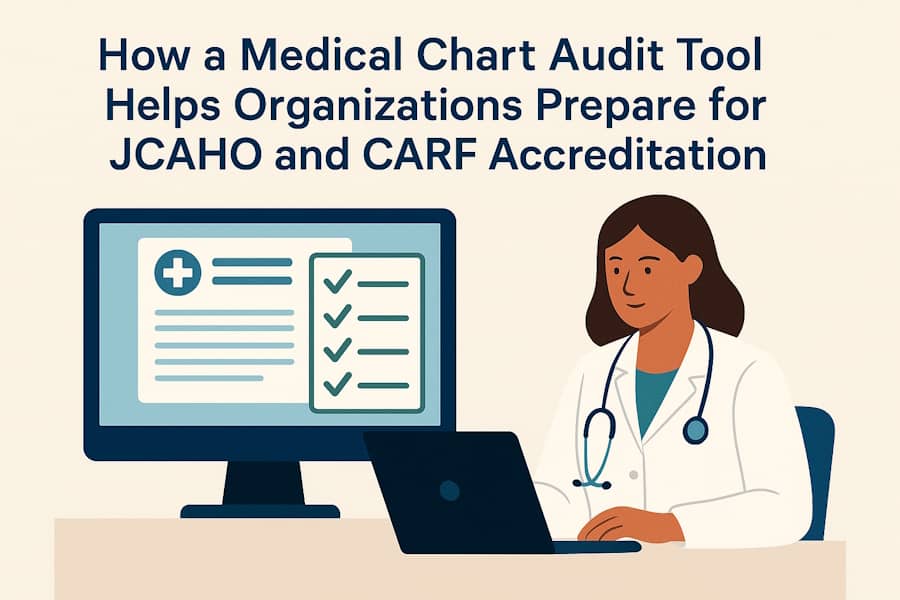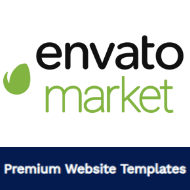Getting ready for JCAHO or CARF accreditation can feel stressful. There is a lot to track. Staff need to make sure every document is complete. Every care note matters. One missing signature can create questions or delays. Some days it feels like chaos. The pile of paperwork can feel never-ending.
Paper charts pile up fast. Files go missing. Notes get scattered. Even experienced staff can overlook things when they manage multiple programs or locations. People get frustrated. Small errors start to add up.
A emr audit tool helps put order into the chaos. Charts get organized. Missing items get noticed early. Staff don’t waste time digging. They can focus on patients. Daily work feels lighter. Leaders can see progress without hovering over every step. Everyone feels a bit more in control. It makes the whole department calmer.
Streamlining Compliance Checks
JCAHO and CARF look closely at documentation. Every note, care plan and signature counts. Auditors spend hours checking charts. Some errors are tiny but still important. Staff can get exhausted trying to track everything manually. A 2021 study found that only 47.2% of health workers in one region had good documentation practices.
A medical chart audit tool makes this easier. Errors and gaps become obvious. Staff don’t have to flip through piles of paper. Departments stay consistent. Everyone knows what needs to be documented. Daily tasks feel smoother. Mistakes happen less often.
Regular checks make staff confident. They don’t panic before surveys. Leadership can see problems early. Teams can focus on care rather than chasing forms. It feels less stressful. Staff can relax a little knowing charts are in order.
Spotting Patterns and Reducing Risks
It’s not only one chart that matters for accreditation. Auditors look for trends across the whole organization. Missing trends can cost time or trust.
A medical chart audit tool can show repeated errors quickly. Missing signatures, incomplete progress notes or skipped assessments are easy to spot. Patterns become visible. Staff can plan to fix them before the surveys arrive.
Leadership can track patterns across programs or locations. Sorting issues fast prevent headaches later and help protect patients. If follow-ups or assessments are skipped, staff are notified. They step in fast. Patients get proper care. Everyone feels more confident knowing the risks are minimized.
Improving Staff Accountability
Accountability improves when documentation is tracked properly. A medical chart audit tool records who added what and when. Supervisors can guide staff without micromanaging. It creates a sense of responsibility. Staff start noticing their own mistakes faster.
Immediate feedback helps staff correct mistakes fast. Things get easier with practice. Errors go down. Patients benefit naturally. Staff feel more aware of their tasks. The whole team starts working together more smoothly.
Working together gets easier. Staff realize responsibility is shared. People start keeping an eye on each other. Staff feel supported. Motivation rises when they see results. They help each other fix errors too. Communication improves because everyone knows what is expected.
Reducing Stress During Accreditation
Accreditation surveys are stressful. Staff worry about missing charts or incomplete forms. The pressure can be intense. Surveys make staff nervous, sometimes days in advance.
A medical chart audit tool helps take some of that stress away. Charts stay updated every day. Alerts catch mistakes. No more last-minute scrambling. Surveyors see clean charts. Staff focus on patients, not on paper. People feel a bit safer knowing issues will be caught. It gives everyone peace of mind.
Everyone knows their role. Staff feel more in control. Patient care doesn’t suffer. Surveys feel less intimidating. The team can breathe a little. The workplace feels more relaxed when charts are organized.
It helps reduce burnout too. Staff can trust the records are right. They focus on what matters. Work feels lighter and less chaotic. They can finally concentrate on helping patients. Morale improves a little each day.
Supporting Continuous Quality Improvement
Accreditation isn’t just about passing surveys. It’s about getting better over time. Continuous improvement matters.
A medical chart audit tool shows trends. It can track compliance, documentation quality and care patterns. Leadership sees what needs extra training. Staff know where to focus. Everyone learns and improves together. Small changes can make a big difference. Teams notice the improvements themselves.
Comparing sites or time periods helps measure progress. Keeping an eye on things all the time helps standards stay high all year. Teams notice changes. You can actually see when things are getting better. Staff start feeling proud of what they do. Leaders feel surer that everything is ready.
Enhancing Communication Across Teams
Good communication really matters. Everyone needs to get updates, notes and progress. If messages don’t get through, small mistakes stack up fast.
A medical chart audit tool lets staff share info as it happens. Notes pop up for everyone at the same time. People don’t have to chase each other for updates. Teams can react quickly. Counselors, nurses and admin staff all see updates. Coordination improves. Fewer mistakes happen. Patients experience smoother care. Staff can ask quick questions without waiting. Messages don’t get lost anymore.
Teams can respond quickly when changes happen. Leadership can check communication. Surveyors notice when teams work well together. Everyone feels a little more connected. Workflows feel smoother and less frustrating.
Saving Time and Resources
Manual chart reviews take forever. Staff hunt for forms. They fix mistakes. They follow up. It takes hours. Many hours could be spent helping patients. Staff get tired. Errors start to pile up.
A medical chart audit tool handles much of that automatically. Missing items get flagged. Charts stay organized. Staff spend more time with patients. Costs go down. Fewer errors. Workflows get better too. Supervisors can assign review tasks, check progress and track compliance without adding pressure. Saved time goes into patient care or training. It makes life easier for everyone.
Final Thoughts
Getting ready for JCAHO or CARF accreditation takes focus. Charts must be accurate. Records need to be organized. Reviews should happen often. Staff feel the pressure every day.
A medical chart audit tool keeps everything on track. Staff spend more time with patients. Leadership gets reliable data. Records stay clear. Everyone knows what is complete. The daily grind becomes easier.
When auditing becomes part of the daily routine, accreditation prep doesn’t feel so scary. Teams work with confidence. Patients get better care. Surveyors see a system that actually works. Strong record-keeping supports good outcomes. Staff feel less stressed. The whole organization runs smoothly.








